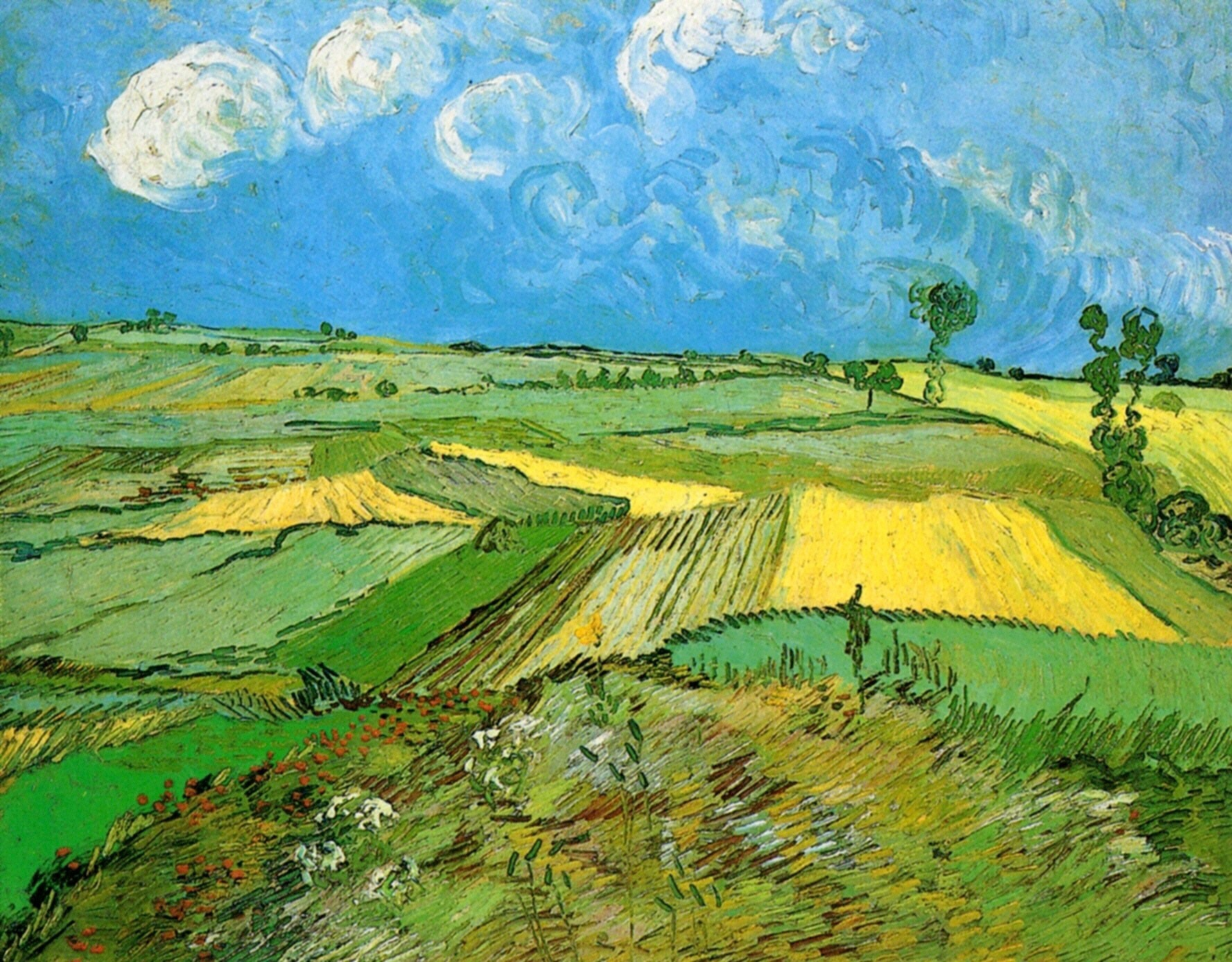Винсент Ван Гог - Пшеничные поля в Овере под облачным небом 1890
 |
 |
 |
 |
 |
 |
 |

Пшеничные поля в Овере под облачным небом 1890
73x92см холст/масло
Carnegie Museum of Art, Pittsburgh
<< Previous G a l l e r y Next >>
From Carnegie Museum of Art, Pittsburgh:
Vincent van Gogh worked as an apprentice art dealer and a lay minister before he decided, in 1880, to become an artist. He painted on his own for nearly six years before leaving his rural life in the Netherlands for Paris, artistic capital of Europe. There he saw paintings by both the Impressionists and the Neo-Impressionists, whose bold colors and contemporary subjects inspired him to brighten his palette and broaden his imagery. Van Gogh left the pressures of the urban environment in 1888 to go to the south of France, where, he wrote, "there is more color and more sun." During his two years there, van Gogh produced more than six hundred paintings and drawings, an astonishing output considering he suffered during this time from attacks of mental and physical illness. In 1890 van Gogh settled in Auvers-sur-Oise, a small village northwest of Paris, whose outlying fields are the setting for this landscape. They stretch out from a grassy knoll in a zig-zag, patchwork pattern, their bold yellows, blues, and greens, their rapid rise up the canvas, and their impastoed furrows uniquely van Gogh's. Van Gogh wrote, in a letter to his brother, Théo, just a few days before he began this painting, "I am far from having found any kind of tranquility...The prospect grows darker...I see no happy future at all." Five days later he felt that "the trouble I had in my head has considerably calmed...I am completely absorbed in that immense plain covered with fields of wheat against the hills boundless as the sea in delicate colors of yellow and green, the pale violet of the plowed and weeded earth checkered at regular intervals with the green of the flowering potato plants, everything under a sky of delicate blue, white, pink, and violet. I am almost too calm, a state that is necessary to paint all that." On July 27 1890, four days after finishing The Plain of Auvers, van Gogh shot himself near the very fields where he had temporarily found peace. He died on July 29.